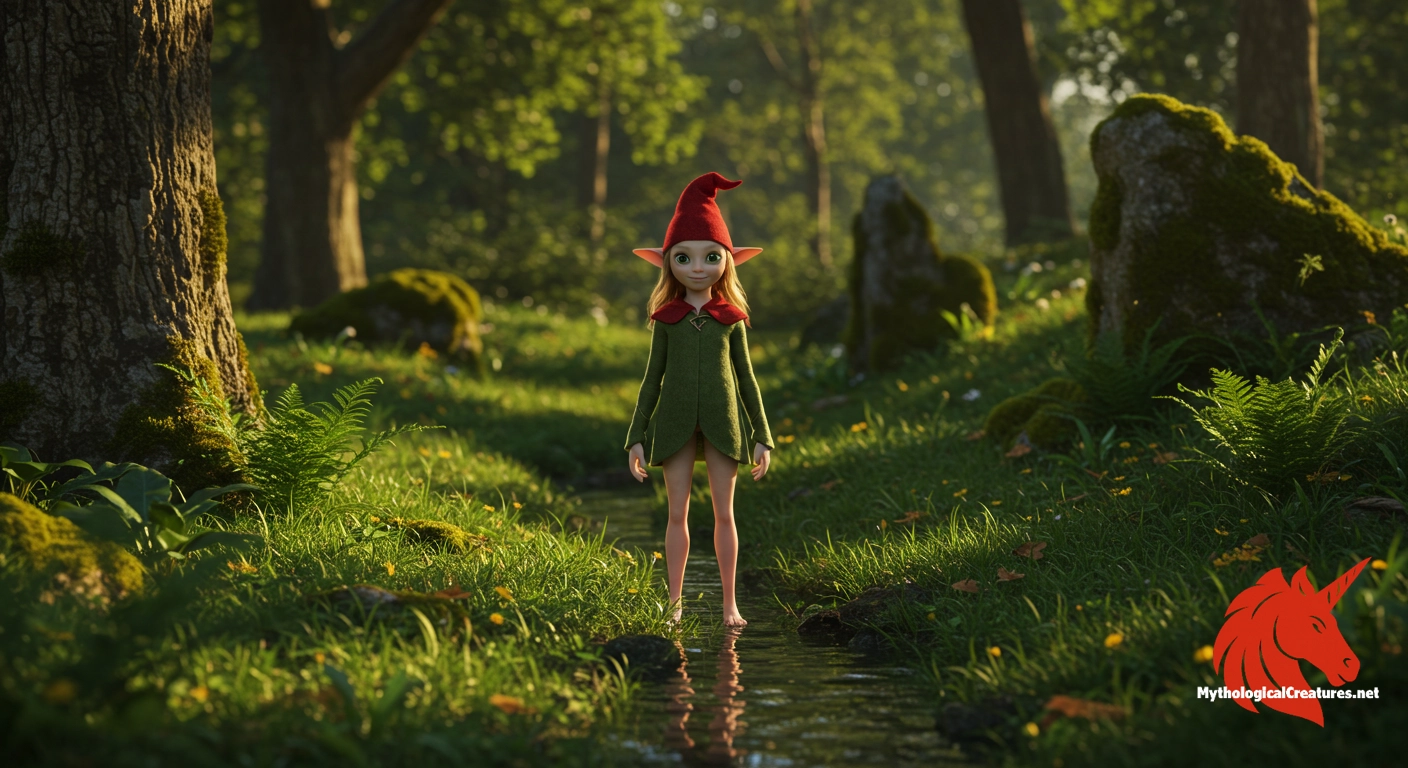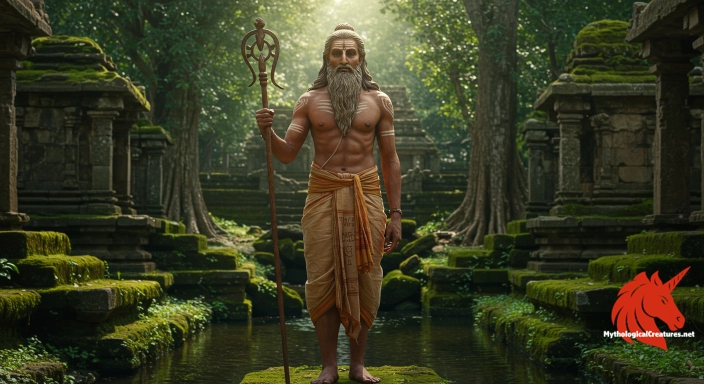Mooinjer veggey: Mooinjer veggey are the fairies of Manx folklore, known as the little people.

Mooinjer veggey
Mooinjer veggey - Represents the enduring connection between the people and the mystical fairy realm in Gaelic traditions.
Origins & First Encounters
Mooinjer veggey embodies a cherished element of Manx lore, representing the enchanting realm of the little people whose origins date back to ancient Gaelic traditions. Their identity, rooted in the mystique of the Isle of Man, has been nurtured through centuries of oral storytelling and communal celebration. Over time, these diminutive beings have come to be portrayed as part guardian, part trickster, reflecting the complex interplay between the human and the supernatural. Their name, steeped in affectionate familiarity, hints at a long-standing cultural reverence and whimsical respect for the natural world. Communities have interwoven their presence with the rhythms of everyday life and the cycles of nature, imbuing local landscapes with a sense of magic and hidden wonder. Early attestations of the Mooinjer veggey were preserved in folklore recitals and folklore compendiums, long before they were ever set down in written form. The evolving narrative of these little people highlights the dynamic nature of Manx cultural identity and its persistent connection to the land. Their mysterious charm and subtle influence continue to resonate as a symbol of nature’s unseen powers and ancestral myth. The allure of these fairies remains a vibrant thread in the broader tapestry of Gaelic folklore.
Source Texts & Tale Variants
The legends of the Mooinjer veggey have been recorded through a rich assortment of primary sources, ranging from ancient oral traditions to early manuscript collections compiled by local enthusiasts. The transmission of these stories has been maintained by storytellers and bards who wove their accounts into everyday events and seasonal festivities. Manuscripts and local accounts, though not always extensive in detail, capture flickering glimpses of their capricious nature and enduring magic. Various story variants present them as both benevolent protectors and mischievous spirits, revealing the duality that characterises their presence. Traditional ballads and anecdotal tales recount encounters with these little people in secluded glens or near ancient monuments, ensuring their legend remained firmly embedded in community memory. Over time, individual storytellers added new layers and subtleties to the narrative, reflecting changing social attitudes and the evolving landscape of belief. Folkloric records from neighbouring Celtic regions further enrich the textual landscape, offering comparative insights that illuminate shared motifs across Gaelic cultures. The diversity among these sources highlights the adaptive and organic nature of folklore, as stories were retold and reshaped to echo local experiences. Each narrative variant, while unique, contributes to the enduring mystique that has made the Mooinjer veggey a timeless fixture in the mythical heritage of the region.
Form & Powers
Descriptions of the Mooinjer veggey often portray them as diminutive, agile beings whose slight stature belies a powerful intrinsic magic. Chroniclers of the myth depict them with delicate facial features, twinkling eyes, and a subtle luminescence that suggests an ethereal quality. These little people are said to possess finely pointed ears, which lend a distinctly otherworldly character to their appearance. Their clothing, rendered in soft natural hues and intricate patterns, is frequently imagined as being woven from the very fabric of the landscape, echoing the colours of moss, heather, and stone. Some accounts evoke visions of attire that sparkles with dew or catches the light of a setting sun, reinforcing their connection to the natural environment. The physical descriptions, though varied, consistently evoke a blend of youthful innocence and timeless wisdom, as if the essence of nature has been distilled into their very form. In certain narratives, they are even attributed with the ability to alter their appearance, shifting subtly to blend with the woodland shadows or the glimmer of moonlight. This transformative quality not only adds to their mystique but also symbolises the secret life of the natural world. Each nuanced detail in their physical portrayal serves as a reminder of both their fragile beauty and their enduring, inexplicable power.
Regional Faces
The depiction of the Mooinjer veggey exhibits intriguing variations across different Gaelic regions, each infusing their own cultural nuances into the tradition. On the Isle of Man, they are lovingly regarded as intimate but elusive custodians of sacred natural spaces and ancient heritage sites, their presence felt in the quiet corners of the island. In neighbouring Ireland, where they are known as Muintir Bheaga, the characterisation leans towards a playful and sometimes impish temperament, reflective of local revelries and seasonal myths. In Scottish Gaelic lore, referred to as Muinntir Bheaga, the little people are often enshrouded in a slightly more austere and mysterious air, aligning with the harsher climatic and topographical narratives of the Highlands. These regional adaptations demonstrate how local geography, customs, and the historical context of the people influence the portrayal of mystical beings. Variations in their dress, behaviour, and even physical traits are a testament to the interplay between the natural environment and folkloric imagination. Local superstitions and the idiosyncrasies of everyday life have helped mould distinct versions of the Mooinjer veggey across these regions. Such differences, however, do not detract from the fundamental belief in the existence of an enchanted microcosm hidden just beyond the veil of everyday perception. Instead, they enrich the overall myth, offering a layered and multifaceted portrait of these ethereal inhabitants.
Cultural Parallels
A comparative exploration of the Mooinjer veggey reveals compelling parallels with other diminutive entities found in Celtic and broader European mythologies. Similar in spirit to the Irish leprechauns and the Scottish brownies, these little people share a common thread of being both amiable and mischievous, able to charm as well as confound those who encounter them. Comparable to the Sidhe, the Mooinjer veggey are envisioned as guardians of hidden realms and custodians of ancient wisdom, bridging the visible and invisible worlds. Their subtle yet persuasive presence in folklore resonates with other European traditions, including the Scandinavian tomte, who likewise act as protectors of the home and natural surroundings. The recurrent theme of size contrasted with immense, inexplicable power underscores a universal narrative that celebrates the magic hidden in the everyday. This rich tapestry of similarities illuminates how different cultures have sought to express humanity’s awe of nature through small, enigmatic beings. As narrative motifs and symbolic roles overlap across regional stories, they collectively underscore the enduring appeal of the fairy archetype in the human imagination. The dialogue between these cultural parallels not only enhances our understanding of the Mooinjer veggey but also reinforces the notion that folklore is a communal, evolving conversation about the mysteries that lie beneath the surface of daily life. Shared imagery and recurring attributes between these mythic figures highlight a cross-cultural legacy that continues to survive and captivate.
Legacy & Modern Evolution
The historical evolution of the Mooinjer veggey spans from the intimate whispers of early oral tradition to thriving modern cultural expressions. Initially revered as vital participants in the natural and supernatural realms, they gradually became emblematic of the delicate balance between humankind and nature. Early folklore revered these little people as ancient custodians whose presence served to explain the inexplicable, while also offering moral guidance and cautionary tales. With the advent of literary interest and modern media, their image was transformed into a symbol rich with environmental significance and cultural nostalgia. Contemporary artists and writers frequently reimagine them as both playful sprites and steadfast guardians of natural heritage, resonating with increasing modern concerns over environmental conservation and cultural identity. Modern festivals and cultural events on the Isle of Man and other Gaelic lands celebrate these figures with renewed vigour, blending ancient myth with current artistic interpretations. Visual art, literature, and even digital media have expanded their narrative, extending their influence far beyond local lore. As attitudes shift and popular culture embraces the magical and the mysterious, the Mooinjer veggey continue to invoke a sense of wonder and timeless enchantment. Their enduring legacy is a testament to the resilience of folklore, adapting seamlessly to the contours of modernity while retaining the mystique of their origins.
Interesting Fact
It is fascinating that the term 'Mooinjer veggey' is unique to the Manx language yet closely linked to similar fairy traditions in Irish and Scottish folklore, highlighting the rich tapestry of Celtic myth.
Quick Creature Info
Features:
Associations:
Our Mythic Legendary Rating:

Also Sometimes Known As:
Habitat:
Supernatural Powers:
Physical Attributes:
Abilities:
Behavior:
Weaknesses:
Lore:
Related Creatures, Tales or Lore
- SSidhe
- LLeprechauns
- BBrownies
References
Discover Another Mythical Legend You May Not Have Heard Of?
Uncover the mysteries of ancient folklore and expand your knowledge of legendary beings from cultures around the world.
Dare to Meet the Mamuni Mayan....
Mythical Disclaimer: The images and data on this site are derived from various historical and literary sources, but we have found that many myths often have multiple versions and interpretations across references, sometimes contradictory. As a result, these creature depictions are artistic interpretations—imaginative blends of folklore, legend, and a dash of AI guesswork. Because creature descriptions vary widely, our illustrations and accompanying information represent our best effort to honor mythology while bridging creative gaps. Enjoy these interpretations—just remember, we've done our best to respect the stories and validate available data, but in the realm of mythology, details often shift, imagination leads the way, and nothing is ever set in stone!
Curated by the Mythological Creatures Team (rev. May 2025)
